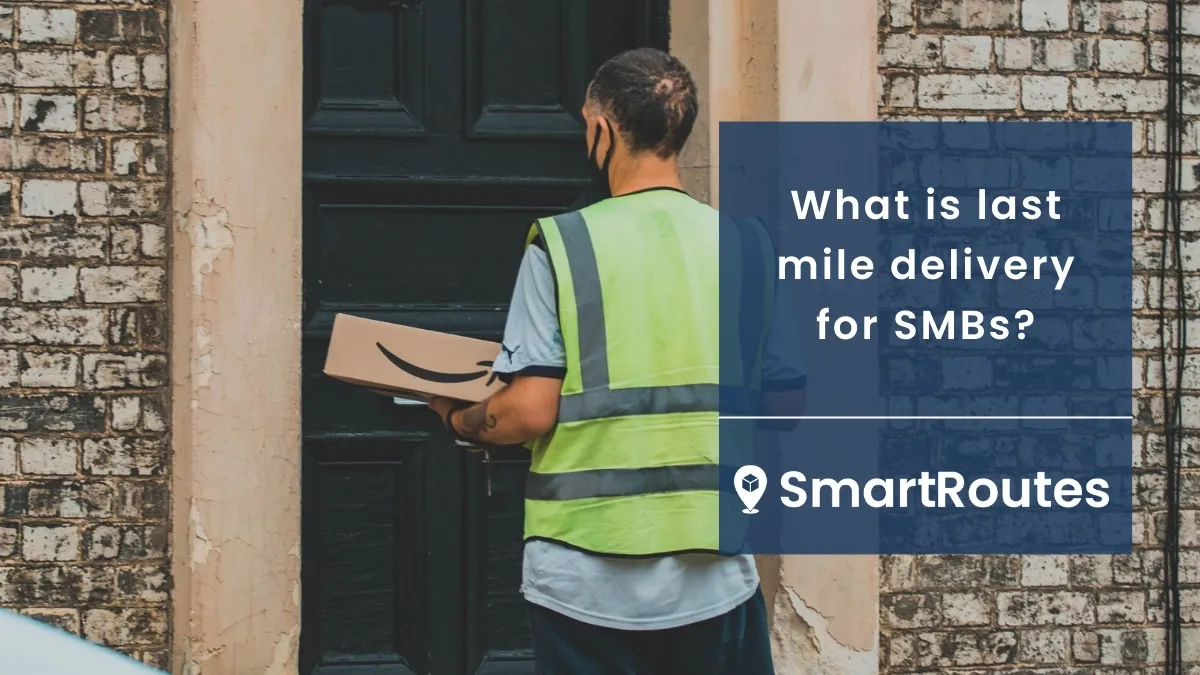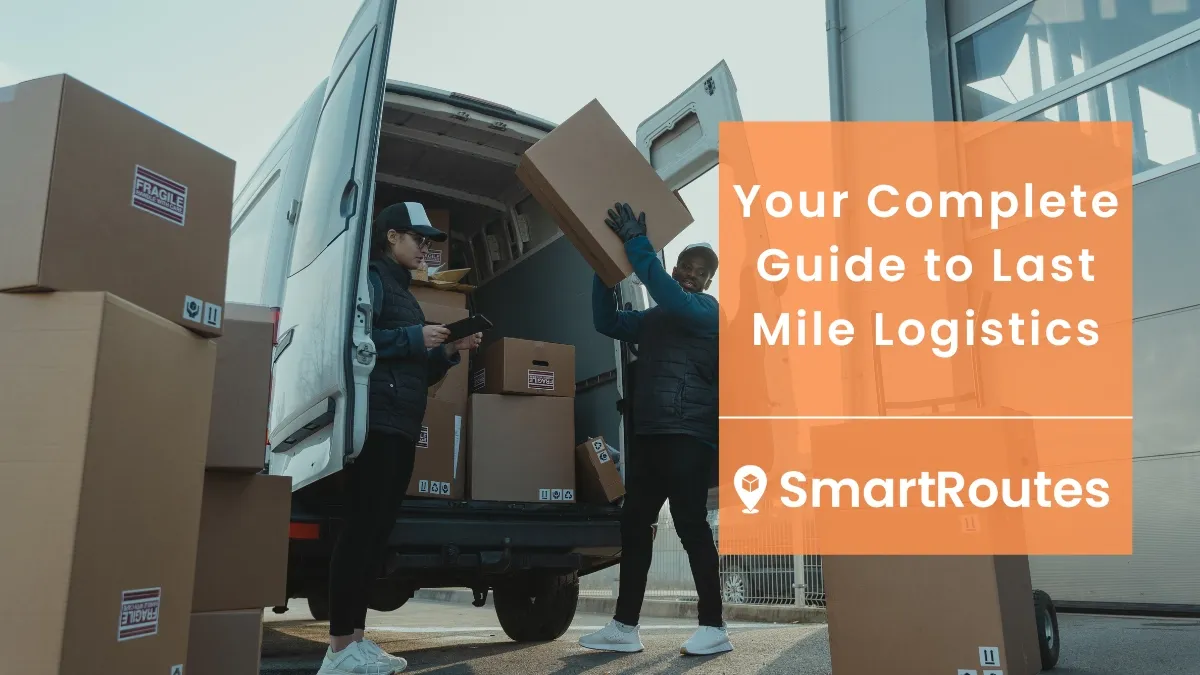What is Last Mile Delivery for SMBs?
Small to medium-sized businesses that do not invest in good quality delivery experience for their customers will suffer in the coming years. However, they can compete with larger retailers.

The past decade has seen massive growth on online retail sales globally and the trend is set to continue with close over 19% of all retail spend being online + home delivery now. Just take a look at this graph from Statista to see the extent of the change in behavior on the part of consumers.
We all know the main players in the home delivery market, UPS, DPD and Amazon to name a few. However, with customer expectations around speed of delivery and brand experience, how can smaller businesses manage to compete in last mile delivery against these giants? Added to this is the arrival of pure online businesses without the overhead of brick and mortar and who have specialized in getting product to doorsteps as part of their core offering to customers. It is difficult if not impossible for many retailers to match these offerings. However, they have to try as so much of brand experience is now taking place on customers’ own doorsteps and the fragility of relying on physical stores for sales into the medium term.
Why is the final mile so important?
The new reality is that brand experience is now fundamentally tied to the experience post-purchase online. It is not as simple as putting your items in a bag and handing them to you.
There are a few things that need to be kept in mind for small retailers:
- You have the advantage of probably being local or familiar to the customer but you still need to give them a good experience after the online purchase.
- Speed of delivery is crucial and ranked by most customers as the most important criterion about online shopping. This contributes to the requirement of being an eco-friendly delivery service.
- Contactless delivery or no contact delivery are required for many customers while Covid is an issue
- You will need to have a live package tracking portal for customers as they are now familiar with this tech from food delivery and Uber-style services
- Finally, outsourcing delivery to a third party provider can make sense but you need to exert influence over the 3PL to ensure they don’t harm your brand in the process.
Think about a seamless delivery experience for customers where they have visibility on orders and those orders are delivered quickly. The experience on their doorstep including delivery driver punctuality, behavior and the packaging experience are now critical. Underpinning all this of course is the fundamental need to use route planning software to structure deliveries as a whole.
Taking ownership of the last mile delivery experience can be a better route to take for SMBs as they can tailor the whole experience and make it a selling point. Winning at last mile by implementing tech to manage it will have the added benefit of reducing customer churn significantly.
The advances in last mile logistics technology is such that it is now affordable for a local pharmacy or food delivery start-up to compete with the likes of Amazon and Deliveroo for delivery experience. It might not be quite a quick but it can feel like a great local business experience that isn’t corporatized and supports the local economy. Customers love this type of service as long as it is not significantly different from ordering from an online giant.
The near future of last mile delivery
Covid has shown us the inherently unpredictable nature of modern business but it has also shown the enduring appeal of online retail and last mile delivery. It is now essential for SMBs and local businesses to embrace this change and understand that it is only going to grow. The implication is that if you don’t implement systems now and you rely on physical stores you will get left behind.
Consumers are motivated by simple desires for fast, cheap and convenient online shopping. However, they are also motivated by less selfish concerns like shopping locally, supporting sustainable practices and having a richer, more real experience with local retailers. This opens up the opportunity for SMBs to drive home their natural advantages and to develop a brand experience that is both good and feels good.
At SmartRoutes we can attest to this with hundreds of local businesses being amazed that they can compete with Amazon Prime or UPS for speed of delivery and quality of the experience overall. How do they do this? Simple, they implement a connected online ordering system to their eCommerce site so deliveries are automatically scheduled for drivers and they use local delivery people who embody their own brand including uniforms and, wait for it, smiles! Local business is smart enough to recognize that this is a winning combination even going up against Amazon.
The brand battleground is on the doorsteps of your customers but the good news is that you can give a five star experience from online site, through to package tracking, and ultimately to the experience of getting your product into their hands. Last mile carrier tracking is a great way to improve the overall delivery experience.
Looking for a solution to improve your last mile operations?
If you're looking for a solution to improve your last mile operations then look no further than SmartRoutes. You can try it out with our 7-day free trial or speak to one of our team today. We can get you up and running in minutes and help you to make the most of it from the outset.
Frequently asked questions
1. What is last mile delivery?
Last mile delivery refers to the final stage of the logistics process where goods are transported from a distribution center or hub to the end destination, typically a customer's doorstep or a retail location. It's considered one of the most critical and challenging parts of the supply chain due to its impact on delivery times, costs, and customer satisfaction.
2. What is the last mile delivery problem?
The last mile delivery problem encompasses the logistical challenges and inefficiencies encountered in delivering goods from distribution centers to the end consumer. This problem includes issues like high delivery costs, traffic congestion, time constraints, customer preferences for faster delivery, difficulty in optimizing routes, and the need for real-time tracking and flexibility.
3. What technologies can businesses utilize for efficient last mile delivery?
- Route optimization software: This technology enables businesses to plan the most efficient delivery routes by considering multiple factors like traffic patterns, delivery windows, and the fastest paths to multiple stops. It helps in minimizing travel time and fuel costs while maximizing the number of deliveries within a given timeframe.
- Delivery management systems: These systems offer end-to-end visibility, tracking, and coordination of deliveries. They allow businesses to monitor shipments in real-time, make necessary adjustments on-the-go, and provide customers with accurate delivery updates. Such systems enhance operational efficiency and customer satisfaction by ensuring timely and transparent deliveries.
If you enjoyed this blog, you might also be interested in:







